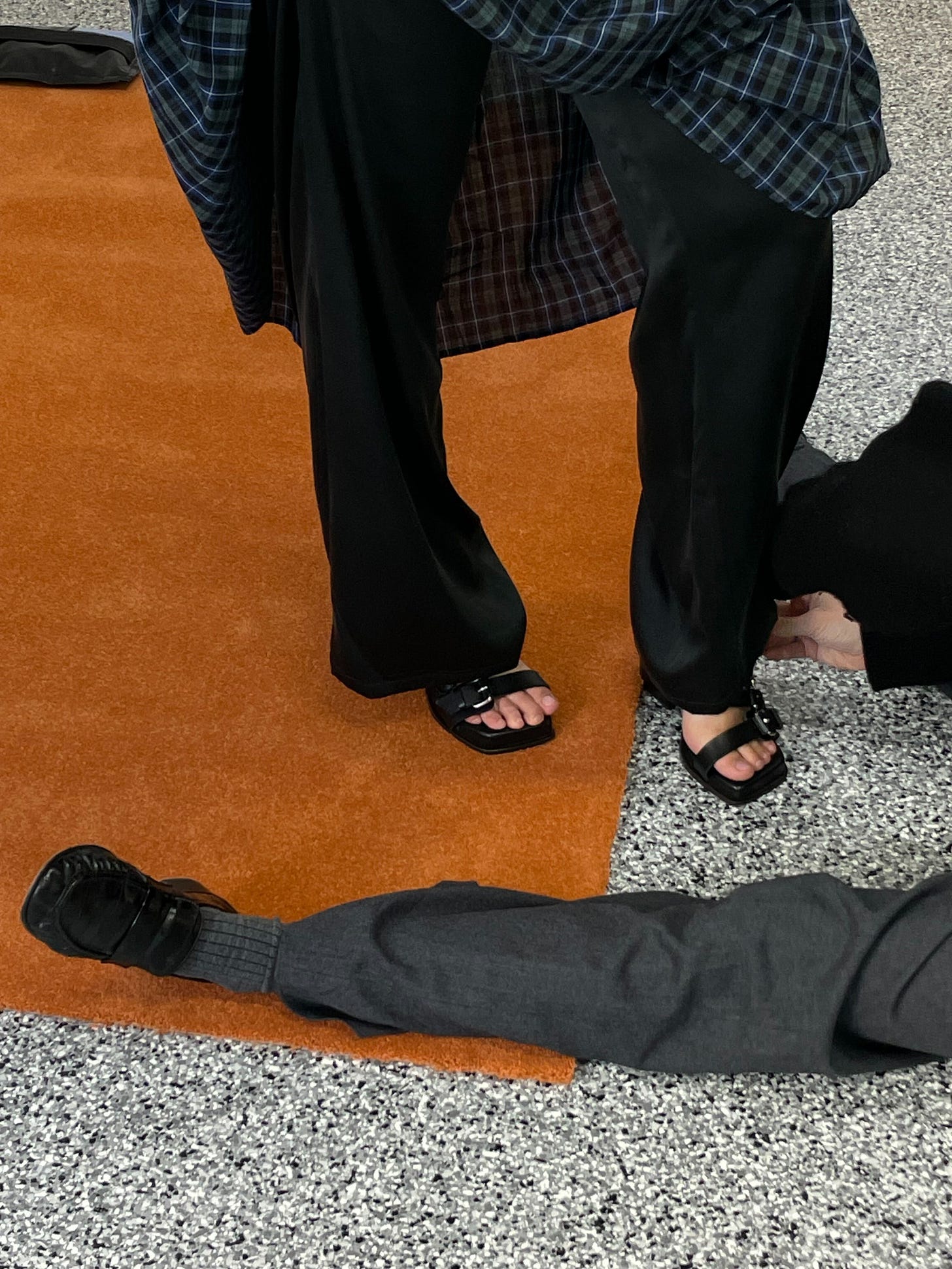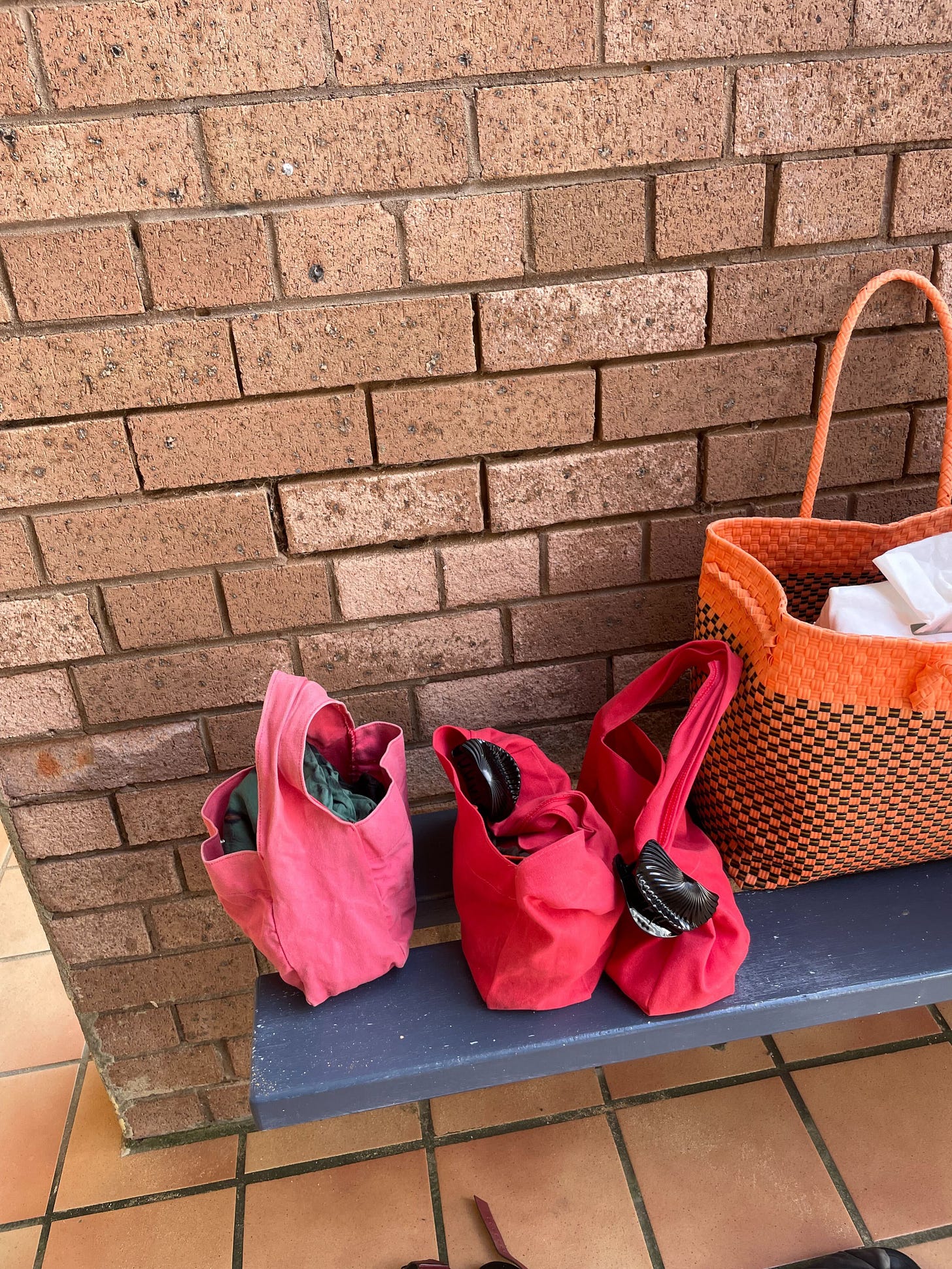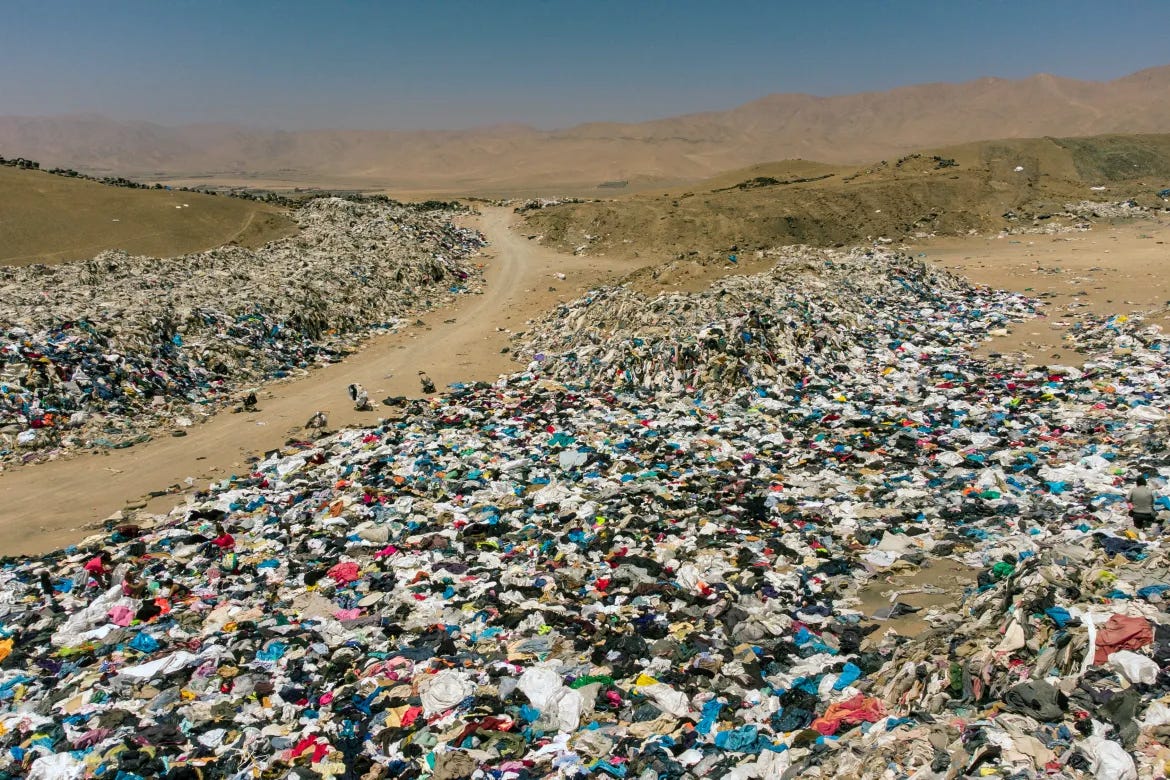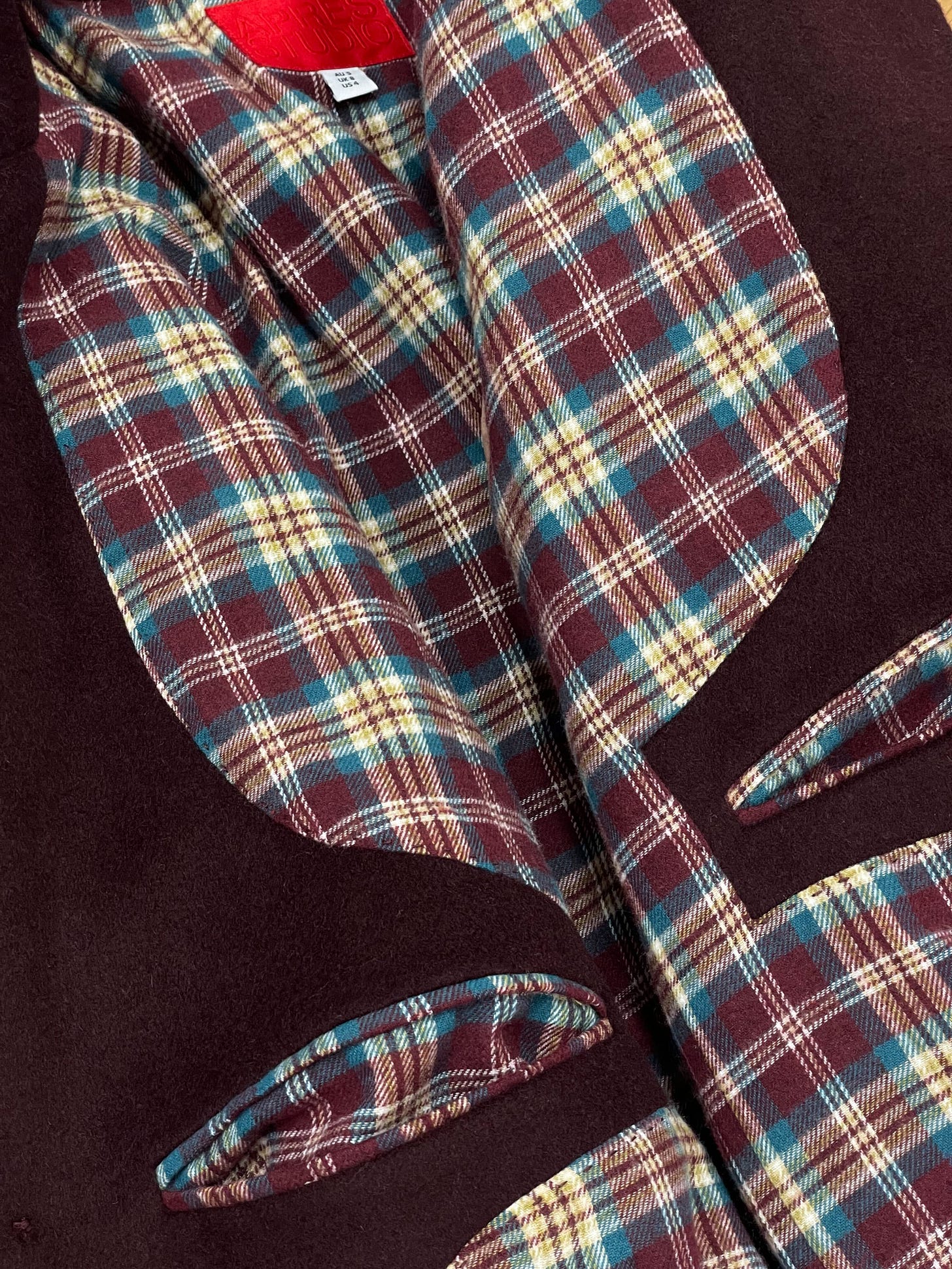The sustainability conversation is a messy place to be, yet that’s no reason for fashion businesses to act the way we do.
The second we’re called in, we avert our guilt, casting our eyes on all the other places blame could lie.
All the while, the call is coming from inside the house.
Here’s how to divorce the joy of fashion from the noise of impact.
STEP 1: Know more, know better
If you’re anything like us, you love style.
It’s the most accessible form of expression, the most malleable and unconstrained way to play with who we are.
Fashion is the only visual medium that we all engage in. We all wear clothes, we all get dressed, we all have personal style, whether these are the result of curated or unthinking decisions.
Even with this in mind, the scale of the fashion conversation is startling. The millions of voices, wardrobes and wallets have become louder year-on-year, obscuring in a way we couldn’t have imagined just a decade ago.
Our collective impact has since become unfathomably harmful.
Off-shore manufacturing means we’re shielded from the immediately visible environmental impact of our work. Particularly in Australia, where so many of us have seen our earliest design chapters, the distance between creation and consequence enables an ‘if a tree falls in a forest’ attitude towards waste, water and air and pollution.
Yet from raw materials to garment production, the footprint of a single fashion item is almost ineffable. A healthy dose of wilful ignorance doesn’t serve any of us, and here’s why.
A single cotton t-shirt requires 2,700L of clean water. A single pair of jeans uses 3,700L. These figures increase where polyester and other plastics, both virgin and recycled, as well as hazardous chemicals for stonewashing and dyeing are used. For context, only 15% of the world’s population has access to adequate levels of drinkable water, and fashion production depletes and pollutes what is available to the remaining 85%.
The carbon emissions produced by one pair of jeans is equivalent to that of an almost 80km drive in a truck, or 5000 phone charges.
Not all of our decisions can be so succinctly quantified in this way, but the fashion waste-shaped proof is in the climate crisis-shaped pudding.
Knowledge is our greatest front against an intensifying landscape. A genuine desire to know more and do better will serve our love of style more than a single tee and jeans combination ever could. For every decision, there’s a more climate-friendly option; because at the end of the day, fast fashion’s profits are helpless on an uninhabitable planet.
STEP 2: A little foresight
Why should we care after our pieces have sold? Is our job as designers and creators not done?
For a time, we could ignore what happened once a garment left our hands. The customer would adopt the style, energy and any responsibility attached. At the same point in time, owning the same outfits for decades wasn’t a radical idea in the slightest.
Years ago, it felt as though the secondhand market as we knew it would absolve us of at least some responsibility for how a garment was treated once it left our hands.
As we acclimatised to life online, thrifting became digitised and the secondhand market exploded with peer-to-peer platforms. Fast forward a few years and the ‘recommerce' market trades over US$248 billion globally. We can happily and conveniently offload the items we no longer wanted through donation or resale, which has ultimately bred a culture of wear-once-and-sell.
As a result, donating is the solution that creates more problems.
When businesses are so consumed with quick trends and quick sales, and customers are able to move through those trends and sales without second thought, we are reinforcing the idea of fashion being throwaway. Fashion was once something to hold onto, now it’s a temporary concept.
The secondhand market has become a dire representation of this speedy cycle.
Charity stores and op shops are currently overwhelmed with donations and forced to manage incomprehensible amounts of textiles. As one option, developing countries are sold fashion waste to deal with while the Global North profits from excess.
Such a neocolonial system has created ‘clothing deserts’, stretches of land where secondhand donations and fashion waste are left for dead. In the Atacama Desert in Chile, tens of thousands of unwanted items are dumped and left to the elements, causing water pollution, wild fires, fibre shedding, chemical leaching and unmanageable environmental toxicity.
The most common brands found amongst dumped goods include the labels we all reccognise: Zara, H&M, Levi’s, Nike and Adidas.
In Accra, the capital of Ghana, a cliff over 20 metres high has been formed by landfill. Over 60% of the mass is unwanted clothing, received in bales from secondhand sources in the UK, Europe, North America and Australia. The country’s coastline is home to ‘plastic beaches’, where clothing clogs waterways and washes up on the shore, breaking down into microplastics and forming landmasses of polyester.
Chile and Ghana are far from the only countries affected, as ecosystems across the planet are hindered by fashion waste. Immediately, with the destruction of any land by fashion waste comes the frustration of local farming, tourism, and other crucial benefactors. The scale slides downwards from there, causing long term damage to communities and longer term damage to the planet, all thanks to a few donated items of clothing.
Why are we creating fashion pieces designed for such a grim path?
For fast fashion retailers and businesses fuelled by cheaply-made knockoffs and dupe culture, is ignorance really bliss?
Taking control of the end-of-life of any collection starts at the beginning, even before a vague idea becomes a faint sketch. Dyes, textiles, trims, cuts, and general functions not only contribute to a garment’s physical longevity, but also their environmental aggression should they become landfill. It’s a miserable thought, but neglecting the fact that all clothing may become waste is an oversight.
STEP 3: Attitude adjustment
Currently, dupe culture is the respondent with the most to answer for in this conversation. Producing anything in the name of quick financial gain is antithetical to fashion, but with the volume of cheaply-made clothing already in circulation, why smother the environment further for a quick buck?
So, how can we create a fashion system that’s optimal for designers, consumers, enjoyers, collectors and even the most ambivalent wearers?
Those who willingly participate in dupe culture will argue that fashion is cyclical and self-referential by nature, so nothing is original or unique. Such an attitude only accelerates an overwhelmingly fast industry, marking the very reason fashion is more self-referential and derivative than ever.
In short: be different. Take a trend and make it better, or don’t acknowledge it at all. Source more wildly interesting ideas and rely on the countless yards of existing textiles in circulation. Find inspiration and leave it as just that, a mere influence in a sea of other references.
Viewing each trend as something to automatically partake in detracts from the fun of fashion. It’s copycatting, flattening who we are and dampening our creativity.
From a brand perspective, uncurbed production harm the timelessness of our offering. When something is duped beyond desire, its shelf life is shortened and the most well-meaning customers don’t want to be associated with the same market of knockoffs.
Unique personal style will always prevail, and mindful, considered habits are the only way forward. The way we design should reflect this ethos, that’s all there is to it.
All humans are allowed to create, all fashion businesses could be valid brands, yet we owe it to our surroundings to do so with as little impact as possible. To take and give in equal measure, if not with a heavier emphasis on the latter. To look outward instead of inward. To learn more, do better, and talk amongst each other.
Most importantly, to carefully cover our footsteps as we leave quietly.











